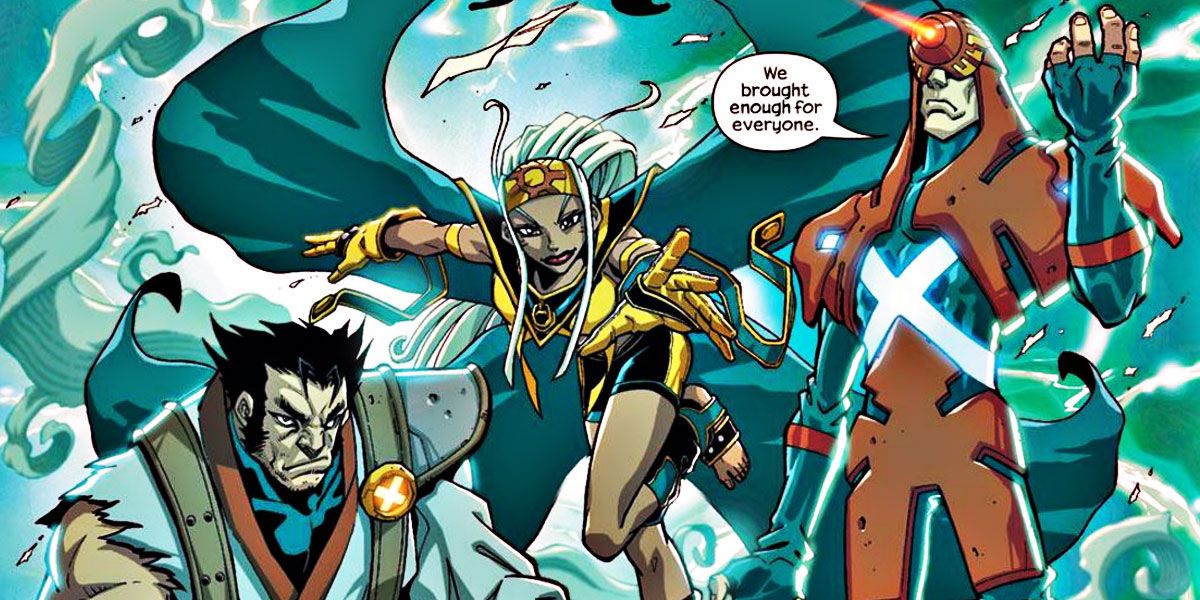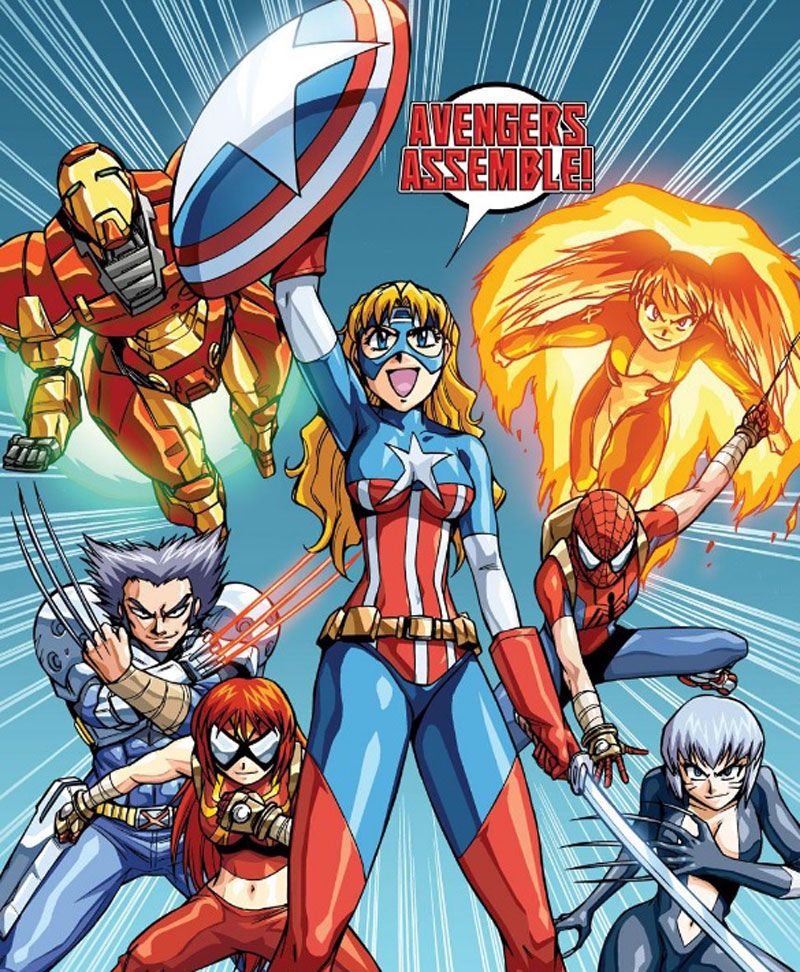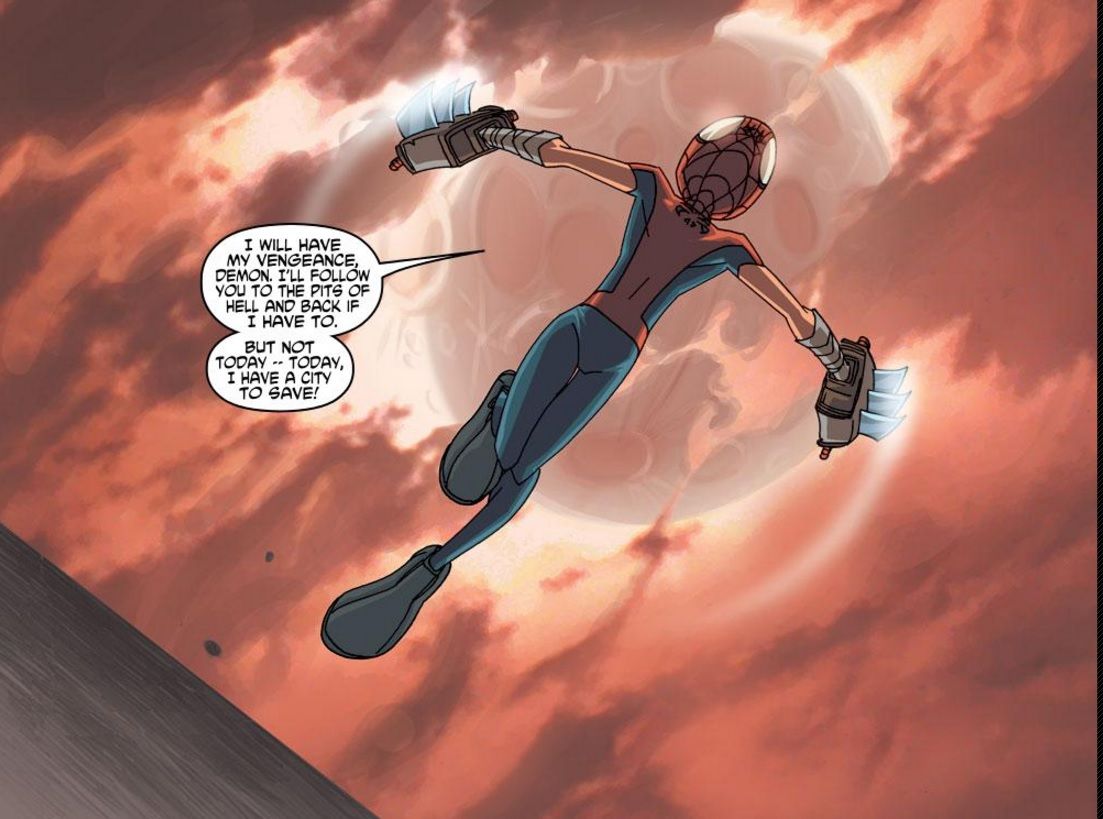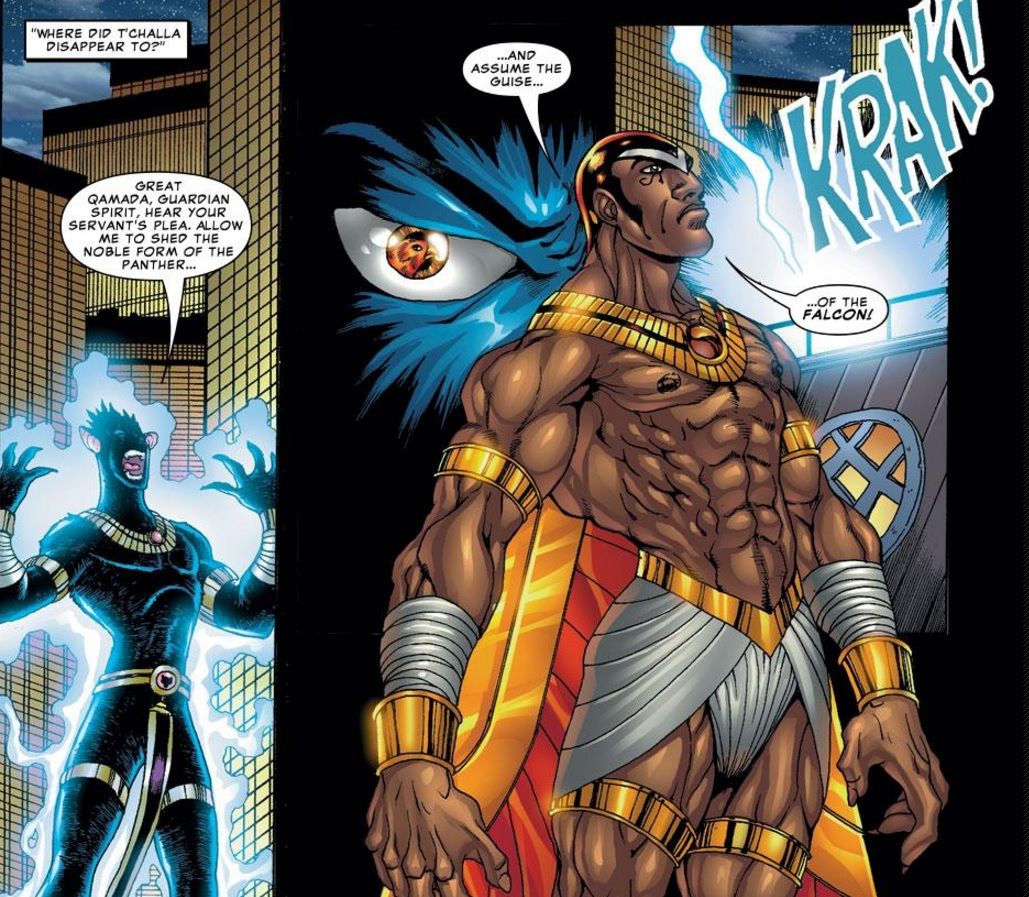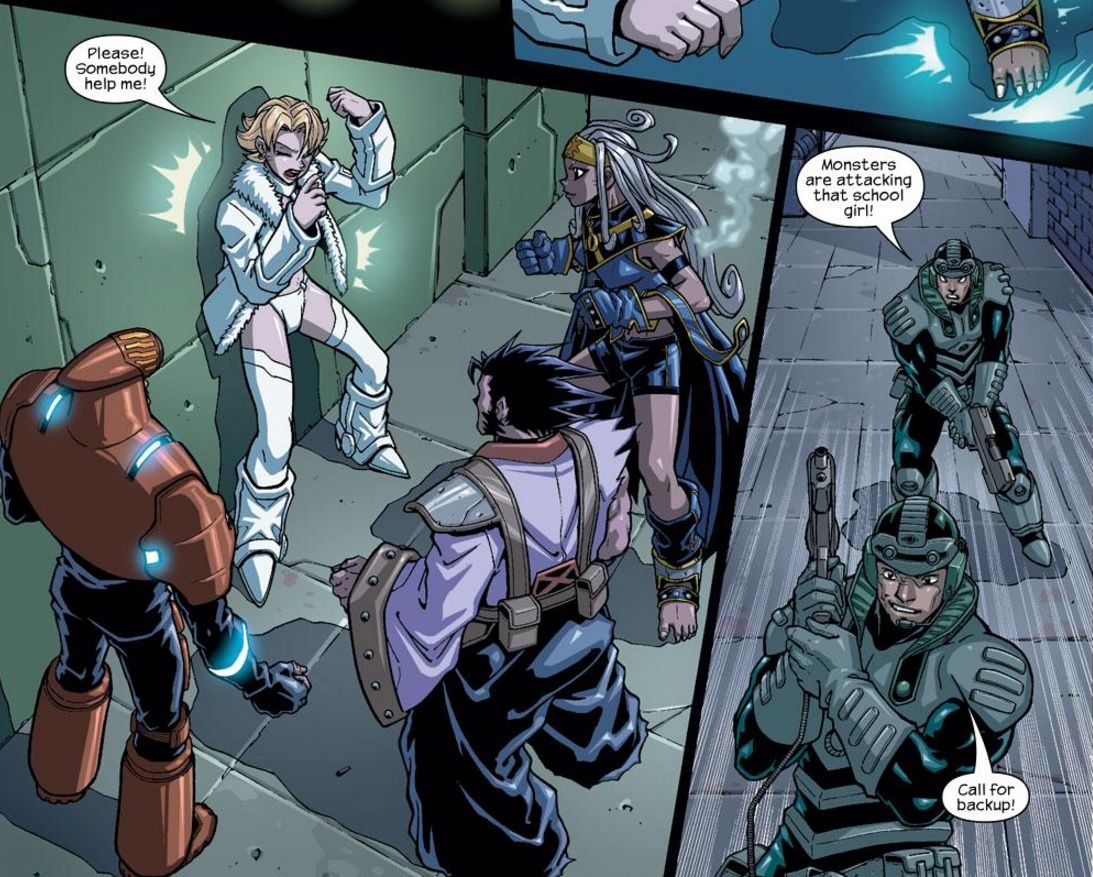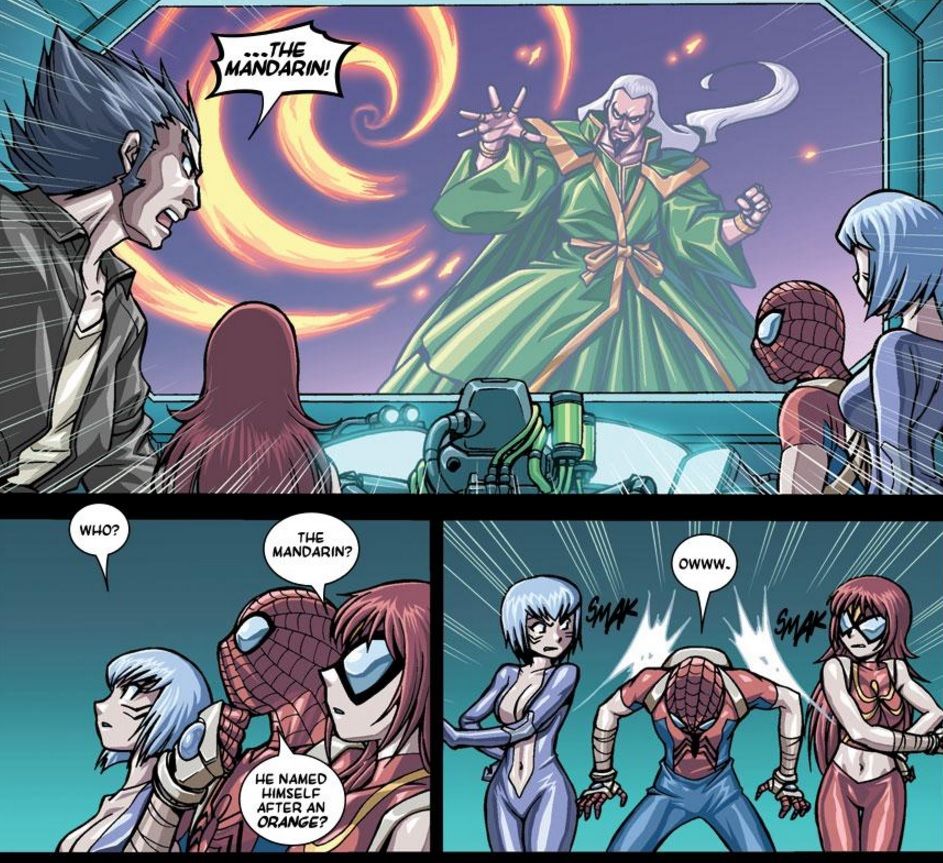The early 2000s brought with them a sea change for comics publishers. After making inroads since the 1980s, steadily gaining traction over the decades, the new millennium saw manga publishers like VIZ Media, Tokyopop and so on break out by doubling down on the bookstore market, capturing a huge audience of kids growing up with Cartoon Network's Toonami anime block. While some of this growth spilled over to comic shops and the direct market, for the most part, it there was a generational divide.
Recovering from the comic book direct market crash of the '90s and its own bankruptcy, Marvel saw this new market and pounced on it. With editor C.B. Cebulski leading the charge, creators were brought on board to recreate the main Marvel Universe, but with some anime-esque twists. There'd been several Marvel manga before -- most notably a 1970s Spider-Man manga drawn by Ryoichi Ikegami -- but this would be the first one spearheaded by Marvel itself. Thus, in March 2002 the Marvel Mangaverse arrived.
Things kicked off with the one-shot "Marvel Mangaverse: New Dawn," written and drawn by Ben Dunn, creator of "Ninja High School" and the founder of Antarctic Press, which in 1984 began publishing manga-esque comics of its own (Dunn sold the company in 2003 and now heads his own Sentai Studios). Read today, the story -- introducing Iron Man Antoinette "Toni" Stark, Bruce Banner and the kaiju Hulk he inadvertently summoned from another dimension, President Steve Rogers, and boy genius scientist/rock star (really) Hank Pym, among others -- is an interesting setup that reads just like mid-90s-early-2000s Shonen Jump stuff, though the rampant fanservice/furry pandering is a bit much. Furthermore, some characters, like Dr. Strange (who bears more than a passing resemblance to Osamu Tezuka's Black Jack) and Tigra (a ditzy catgirl cursed to remain so until she does 1000 good deeds, but mostly just stands around being snarky and wearing tight clothing), are introduced sans any sort of context, which is not a good idea if you're hoping to attract newer or younger readers who've heard of Hulk but not everyone else.
"New Dawn" kicked off the first round of the Mangaverse: a bunch of one-shots that all told a vaguely interconnecting story of the kaiju Hulk wrecking New York. This first wave is a bit all over the place. Some stories are fine, like "Marvel Mangaverse: Avengers," where members of UDON Entertainment--writer Ken Siu-Chong and artists Alvin Lee, Arnold Tsang, Omar Dogan and Shane Law--make Power Rangers out of Cap, Scarlet Witch, Vision (who's a boy genius brain inside a robot) and Hawkeye, with Tony Stark's disembodied head as Zordon and their Megazord being the "Ultimate Iron Man." Some are great, like Kaare Andrews' "Marvel Mangaverse: Spider-Man," about a powerless, ninja Spidey who swings on spider-shaped bolas and zeroes in on the fun wish fulfillment part of superheroes.
And some were just awful, like "Marvel Mangaverse: The Punisher," where artists Lea Hernadez and Guru eFX turn in great work in service of a puerile Peter David script featuring a Punisher who's a Japanese woman -- a strict high school principal who fights criminals by... dressing up as a geisha and spanking them. And the villain's name is Skang Kee Ho. (Really.) Even worse is "Marvel Mangaverse: Fantastic Four," where writer Adam Warren, penciller Keron Grant, inker Rob Stull, colorist Chris Walker and letterer Richard Starkings basically remake the FF into Gundam pilots in charge of mech suits that activate their powers. There's a lot of interesting twists on the core concept here: Ben can turn into the Thing at will, Human Torch and Invisible Woman are gender-swapped half-sisters Jonatha and Sioux, whie Reed's brain is the only part of him that's elastic, a power which increases his intelligence. Unfortunately, it's buried under a bunch of faux-macho posturing -- Reed is a huge jerk and (as several cutaways establish) an irresistible sex god, the Thing is just a mouthy douche, and there's too much wordiness and technobabble instead of action.
Dunn brought the story of the Hulkzilla attacking NYC to a culmination in "Marvel Mangaverse: Eternity Twilight," which nicely brings all the heroes together for a big punch-up culminating in the first and only appearance of Thor in the whole project. Dunn's script and pencils (colored by Guru eFX) show that he gets how to combine the cores of these characters with shonen aesthetics more than most, though it's maybe a bit too wordy for its own good.
Marvel Mangaverse's" first wave was successful enough that is was followed by a sequel miniseries, also called "Marvel Mangaverse." Written by Kevin Gunstone and Dunn, drawn by Dunn and colored by Guru eFX, the six-issue series featured two separate stories. The first retold the Galactus Trilogy and the introduction of the Inhumans combined with the introduction of Captain Marvel. Unlike the Ultimate Universe, Mangaverse Galactus isn't a huge dude; rather, he's an artificial planetoid with a giant eyeball. Meanwhile, the decision to make Captain Marvel a kid named Marvin Ellwood and the son of the dead Mar-Vell was a smart one, giving younger readers a hook, even if he's a bit too "sassy teenager written by adult."
The second arc of the mini revolved around Dr. Doom attacking the United Nations in a bid for world domination. The reveal of just who Doom is is pretty stunning, but there's some strange asides en route to a pretty good conclusion. Vision and Hawkeye are killed off-panel, but their deaths are treated just as gravely as the huge upset that happens involving Cap. Black Panther -- who's an actual cat-person, like Tigra -- is also revealed to be the Falcon, mostly for convenience's sake. Still though, aside from these mis-steps, some minor plot holes and a downgrade in Dunn's art in the last issue, this is much better than the first wave.
Even better are the two follow-up miniseries: "Spider-Man: Legend of the Spider-Clan," and "X-Men: Ronin: Spider-Clan," again written by Kaare Andrews but featuring the first complete series art by Skottie Young (prior to that, he'd only done fill-in work) and colors by Pat Duke. It's really fun stuff that, unlike the earlier Andrews one-shot, visually clarifies that this Peter Parker is of mixed-race descent. It's reverent of a bunch of iconic Spider-Man moments and feels a little complementary to what "Ultimate Spider-Man" was doing at the time, even if there's some creepy overtones with a clearly adult Black Cat hitting on a teenage Peter. Young's distinct pencils blend well with Duke's shiny colors, giving the whole story a nice, stylized look.
"X-Men: Ronin," written by J. Torres, drawn by Makoto Nakatsuka, colored by Guru eFX and lettered by Randy Gentile, takes the most liberties with the source material, and it's to the story's benefit, establishing a solid team dynamic against a core threat that feels like your watching a particularly good superhero cartoon; in other words, precisely the tone this sort of project should strike. The X-Men here is just Wolverine, who has a robot hand with energy claws; Cyclops (his brother), who has one working eye and a devil-may-care attitude; Storm, who's shorter but still just as powerful as her normal self, and Jean Grey, whose anger increases her psychic energy to something representing the Phoenix Force, versus Emma Frost and the Hellfire Club, here controlled by ex-Yakuza mutants. Honestly, this is probably the best Mangaverse title because Nakatsuka -- who also worked on English-language "Star Wars" and "Star Trek "manga -- knows how visual pacing in this style works, and Torres -- who went on to write one of the best all-ages superhero comics ever with "Teen Titans Go!" -- knows how to pare complex characters down to their essentials. Despite some story beats feeling a bit rushed and some iffy dialogue, possibly due to the story being planned and solicited at six issues, but trimmed down to five, this is a solid miniseries that's the best example of what the Mangaverse tried to accomplish.
Unfortunately, these series didn't have the impact Marvel was hoping for. The Mangaverse concept was shelved for a year, then given a violent end with the 2006 miniseries "New Mangaverse: Rings of Fire," written by C.B. Cebulski, drawn by Tommy Ohtsuka, colored by Guru eFX and lettered by Randy Gentile. The five-issue story ended the Mangaverse -- whose official multiversal designation is Earth-2301 -- in a violent manner, similar to what would happen to the Ultimate Universe not too long after with "Ultimatum." Tigra and Strange, who have much better designs here, are the first to go, followed by Mr. Fantastic, The Thing, Captain Marvel, Daredevil and more, all courtesy of the Hand. Led by Sunfire, Silver Samurai and Lady Deathstrike, with Elektra as their head enforcer, the Hand use the Ten Rings of the Mandarin to destroy all superheroes. It comes down to a last stand pitting the bad guys against Spider-Man, Tony Stark (whose head fits into a completely robotic Iron Man suit), Wolverine (the only surviving mutant), Spider-Woman (Mary Jane Watson), Black Cat (in a new costume that, like Spider-Woman's, is cheesecake personified), Invisible Woman, Human Torch and Carol Danvers (who winds up with super-strength and invulnerability after her military base is attacked by the Hand), in a last stand for their world.
Although the humor is a bit juvenile and the ending's cliffhanger is just odd and comes out of nowhere, Ohtsuka's artwork is absolutely incredible, showing that, if the line had had a unified vision for itself from the start, it might have worked way better. As it is, this is like a disappointing anime that got a great finale movie that was everything you were hoping for.
Ultimately, the Marvel Mangaverse is very much a product of its time. While the artwork varies from passable to amazing, the whole line is brought down by a mostly surface understanding of the manga storytelling approach, and some pretty lousy lettering in spots. This was in the early days of computer lettering, and it's very clunky here, whether it be the double-page spreads with misaligned balloons, the bizarrely spaced-out words, or the truly terrible work done by Chuck Austen in his "Marvel Mangaverse: Ghost Riders" one-shot, it's just not up to professional letting standards. For the Ghost Riders one-shot, it's a true shame, because the story is really fun otherwise.
If the Mangaverse had launched just a few years later, or even today, and involved more Western comics creators that grew up learning from manga like Faith Erin Hicks, Babs Tarr or Jillian Tamaki, along with more Japanese creators involved, like Takeshi Miyazawa, it could have been something really great. As it stands, the Mangaverse -- which is slated to be reprinted in a hardcover omnibus this winter -- is a fascinating, occasionally cringeworthy time capsule of superhero comics grappling with losing some of their financial and cultural dominance to manga, and what the combining of the two forms could have been.

